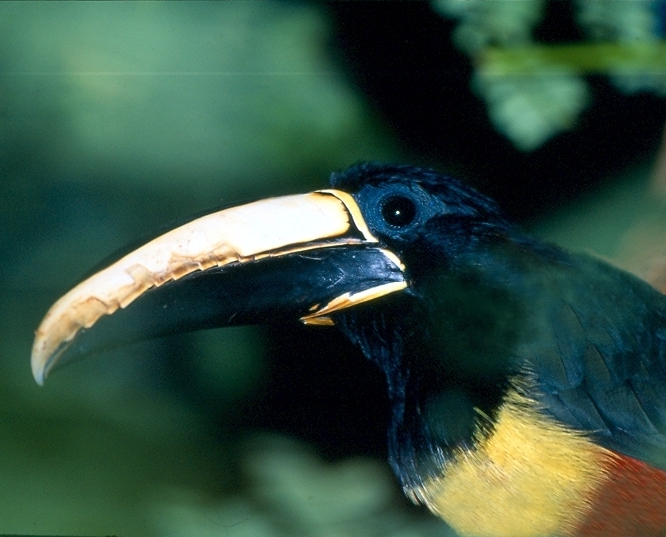Description: Black-necked aracaris have a black head and throat with dark green to almost black back and tail. Its undersides are yellow with a red band and rump. The upper bill (maxilla) is ivory and the lower bill (mandible) is black. Sexes are similar.
Size: One of the larger aracaris, it measures 14-18 inches (36-46 cm) and weighs 8 to 11 ounces (227- 312 gr). The bill is approximately four inches (10 cm) in length.
Behavior: Black-necked aracaris live in flocks of eight to ten individuals. They will migrate over long distances in search of food. Their main predators are larger birds of prey.
Diet: Diet consists of fruit, nuts and animal prey. Communication: This is a very noisy bird that
shrieks constantly.
Reproduction: Season is roughly February to August. Two to four white eggs are laid. Nests are in old tree cavities (such as those made by woodpeckers); both sexes incubate for a period of 16-17 days. It is noted that the male will feed the hen while she incubates eggs. Both parents feed the chicks, often by regurgitating food items. Fledging occurs at approximately 40 days, at which point it is thought the chicks become ‘non-breeders’ within a flock.
Habitat/range: Can be found in a variety of forest and woodland habitats in Brazil, French Guiana,
Guyana, Suriname and Venezuela.
Status: Classified as Least Concern (LC) on IUCN Red List; CITES, Appendix II.



